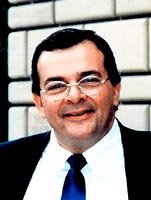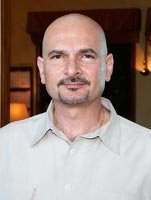Kronfli's Niche Business
Local mill weathers difficult market with specialty fabrics
Kronfli Spundale Mills’ rapid growth streak was halted by offshore competition, a shift in fashion and California’s energy crisis, but the Vernon, Calif.-based knitter is still soldiering on with leaner operations and a new focus on specialty niche businesses.
Kronfli’s owners, Ted and Paul Kronfli, have been expanding several small segments of their current business.
The 26-year-old company manufactures performance fabrics for the active sports market including fabrics with moisture-management, thermal-insulation and antibacterial properties. There’s also a small division that produces industrial fabrics for specialized industries such as fire-retardant fabrics for the auto-racing and metallurgy industries and fabrics for the medical field. The company produces water-repellant fabrics, anti-static fabrics and fabrics that block ultra-violet light. And there’s even a division that produces bulletproof fabrics for correctional institutions.
Combined, these specialized segments have expanded from about 10 percent to 80 percent of Kronfli’s business in recent months, according to Ted Kronfli. The company will continue to develop and produce fashion fabrics, but that division will account for a small portion of the mill’s production.
“We continue to research other areas of the market and other applications for circular knits in order to create the demand to replace the existing woven fabrics and to invent new products for new applications,” said Kronfli.
The company’s research and development department produces about 25 new fabrics each week, according to Ted Kronfli, who stressed the advantages of the company’s verticality.
“Our R&D department determines specifications for each fabric’s development,” he said. “When production comes around, these fabrics will be knit on exactly the same equipment they were developed on and will be processed in the same dyeing machines and the same finishing ranges that they were developed on.”
Steady Growth
When Kronfli opened its doors in 1977, it grew steadily, establishing itself as a maker of specialty knits for the fashion market.
The company’s business began booming in the 1990s and the company began to expand beyond its walls, adding buildings to house the growing segments of the business.
In 1999, Kronfli’s owners took the next logical step, investing in excess of $10 million in new machines, new automation technology, an expanded dyeing facility and a new 300,000-square-foot facility in a centralized location. The timing seemed perfect—California’s textile community was gaining national attention as a fast-growing market for knitted fabrics.
“Business was doing very well, our customers were expanding their business with us, the demand for faster deliveries and larger orders continued to grow,” said Ted Kronfli, who added that at the time, the company was operating out of six buildings housing knitting, dyeing and finishing facilities plus shipping. The mill was subcontracting a third of its knitting to outside mills just to keep up with demand, he said.
“We expanded our production by 50 percent and we planned an expansion of 200 percent in our dyeing facility by setting up the infrastructure, the water supply, sewers and all the other utilities that have to service that kind of production,” he added. By consolidating operations into one central facility, the company hoped to cut costs and to be more efficient.
But fate—in the form of the crippling energy crisis and increased offshore imports— stepped in to halt Kronfli’s rapid progress.
Lean and efficient
These days, Kronfli Spundale Mills is running much leaner than before. The company has tightened up its operations, scaling back from 600 employees to a scant 120.
And the company will likely stay this lean while it builds its specialty fabrics business, Ted Kronfli said.
“During the collapse of the fashion textile demand, our business in specialty areas has grown and continues to grow,” he said. “The unfortunate thing is there is not enough volume there yet to support a large knitting mill of our size. So we have downsized the mill to be efficient to the current market that we are servicing and continue to expand through developments and innovations with fabrics and new fibers to reach new customers, new markets and new applications for circular knits.”
The transition has been difficult. As the company scaled back operations, rumors that it was closing—or worse, had already shuttered operations—began circulating in the apparel industry, Ted Kronfli said.
“The rumor mill is causing a lot of customers to question our sustainability in the marketplace,” he said.
Kronfli’s owners and executives have been scheduling meetings with potential and past customers to try to put a stop to the rumors.
“Customers who receive fabric from us know that these are only rumors because we are shipping excellent quality on time and sometimes ahead of time. Those that work with us have the proof of our ability to perform for them.”
The company’s goals now are twofold: “We want to tell our customers that our goals are to continue diversification so we can survive the downturn in the textile industry and justify our existence in the future by creating products and sustaining business that imports are not really interested in pursuing,” Ted Kronfli said.
“The success of this mill has been our customers that have really educated us and challenged us to do the things that we do.”
























